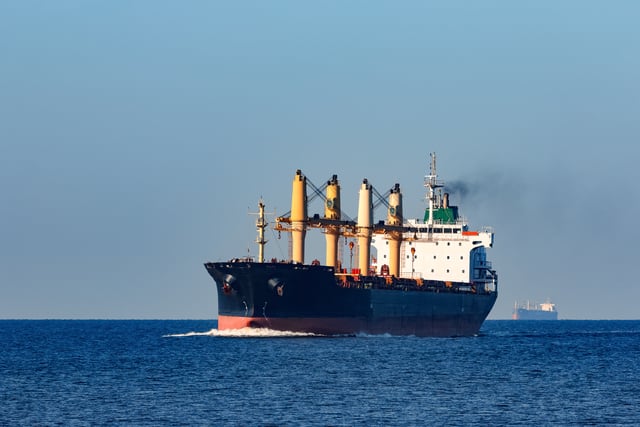
Maritime security has become a vital component of global stability, particularly as sea-based trade and transportation continue to expand. With thousands of vessels navigating international waters daily, identifying and assessing emerging threats requires a shift from reactive to proactive strategies. Among the most promising developments is the use of behavioral analysis to detect suspicious vessel activity.
By leveraging advanced technologies and coordinated operational insights, authorities can better monitor maritime zones and respond more effectively to illicit actions. The fusion of data, human expertise, and machine learning is reshaping how nations protect their economic interests and uphold regional safety. Yet, James “Jim” Feldkamp notes that challenges persist—ranging from data gaps to cross-border coordination—highlighting the need for continued investments and collaboration in the field.
Importance of Maritime Security and Early Detection
Global trade relies heavily on secure and efficient maritime routes. When these waters are compromised by illegal activities such as drug trafficking, human smuggling, or unauthorized fishing, the economic and security consequences can be significant. Early identification of these threats allows authorities to intervene before damage is done.
Suspicious maritime behavior often occurs in regions with limited monitoring or near international boundaries. Vessels operating without a clear purpose or changing their routes without a logical cause can present early signs of unlawful activity. Monitoring these patterns helps reduce the risks posed to legal maritime operations and coastal communities.
Behavioral Analysis in Maritime Operations
Behavioral analysis in the maritime domain involves studying patterns in vessel activity to identify actions that deviate from expected norms. Ships typically follow predictable routes and schedules, so unusual movements or sudden course changes can reveal potential threats. By examining these behaviors in context, authorities can pinpoint anomalies that may signal illicit operations. This process depends heavily on data collected from sources like AIS transmissions, satellite imagery, and radar.
When combined, these tools allow analysts to construct a comprehensive picture of maritime traffic and detect inconsistencies. A tanker that drifts slowly near a known smuggling corridor without a declared destination might be flagged for further investigation. Vessels that repeatedly enter high-risk zones without logistical need may also raise concerns. In recent years, machine-assisted behavioral analysis has become more effective at recognizing subtle irregularities that observers might overlook.
Recognizing Suspicious Vessel Behavior
Suspicious vessel behavior is typically identified through actions that fall outside the patterns of lawful maritime operations. A cargo ship repeatedly turning off its AIS transponder while nearing a remote island raises alarms, especially if the area is known for illegal transshipment. Similarly, vessels that linger for extended periods in restricted or economically sensitive zones draw scrutiny.
Patterns of irregular port visits or rendezvous at sea—particularly between vessels with no shared commercial purpose—can also suggest covert exchanges. Such behaviors differ from the structured activities seen in commercial shipping, where timing and transparency are crucial to operations.
In Southeast Asia, increased monitoring of ship movements uncovered a network of vessels engaged in unauthorized fuel transfers at sea. By analyzing route deviations and prolonged idle times, enforcement agencies were able to intercept these operations before they reached shore.
Technology Supporting Behavioral Detection
Modern surveillance systems rely heavily on artificial intelligence and advanced analytics to process vast streams of maritime data. These technologies sift through AIS signals, radar inputs, and satellite imagery to detect patterns and highlight anomalies. By automating this analysis, maritime authorities can focus their efforts on vessels that exhibit genuinely suspicious behavior.
One such case involved a fishing vessel off the coast of West Africa that appeared to follow a typical route but was flagged by behavioral algorithms for erratic speed changes and inconsistent reporting. Upon inspection, it was found to be part of an illegal fishing operation attempting to mask its movements through deceptive navigation patterns.
Practical Use and Operational Insights
Behavioral analysis has already proven to be a valuable asset. In the Mediterranean, coordinated surveillance efforts tracked a group of vessels exhibiting synchronized movements and unexplained delays near a known human trafficking route. The insights led to successful interdictions and the rescue of dozens of individuals.
Operational takeaways from such incidents emphasize the importance of cross-agency coordination and timely data sharing. When behavioral anomalies are communicated quickly across national and organizational lines, responses become more agile and targeted. These lessons continuously shape how maritime security teams refine their monitoring protocols and response tactics. Incorporating lessons learned from each mission has helped agencies better prioritize resources and anticipate emerging threat zones.
Challenges and Future Considerations
Despite its growing potential, behavioral analysis in maritime contexts faces several limitations. Data quality and availability vary widely by region, and not all vessels are required to carry tracking equipment. This creates blind spots that complicate comprehensive surveillance efforts. In areas with limited infrastructure, even basic data collection can be inconsistent.
Another major hurdle is the balance between automation and human oversight. While algorithms can flag unusual behavior, interpreting the context behind those actions often requires experienced analysts. Misjudgments can lead to unnecessary inspections or missed threats.
Looking ahead, international collaboration will be crucial. As maritime threats cross borders, so too must the strategies to address them. Investments in data infrastructure, training, and shared intelligence platforms will help ensure behavioral analysis remains a cornerstone of global maritime security.
Disclaimer
The information contained in South Florida Reporter is for general information purposes only.
The South Florida Reporter assumes no responsibility for errors or omissions in the contents of the Service.
In no event shall the South Florida Reporter be liable for any special, direct, indirect, consequential, or incidental damages or any damages whatsoever, whether in an action of contract, negligence or other tort, arising out of or in connection with the use of the Service or the contents of the Service. The Company reserves the right to make additions, deletions, or modifications to the contents of the Service at any time without prior notice.
The Company does not warrant that the Service is free of viruses or other harmful components












